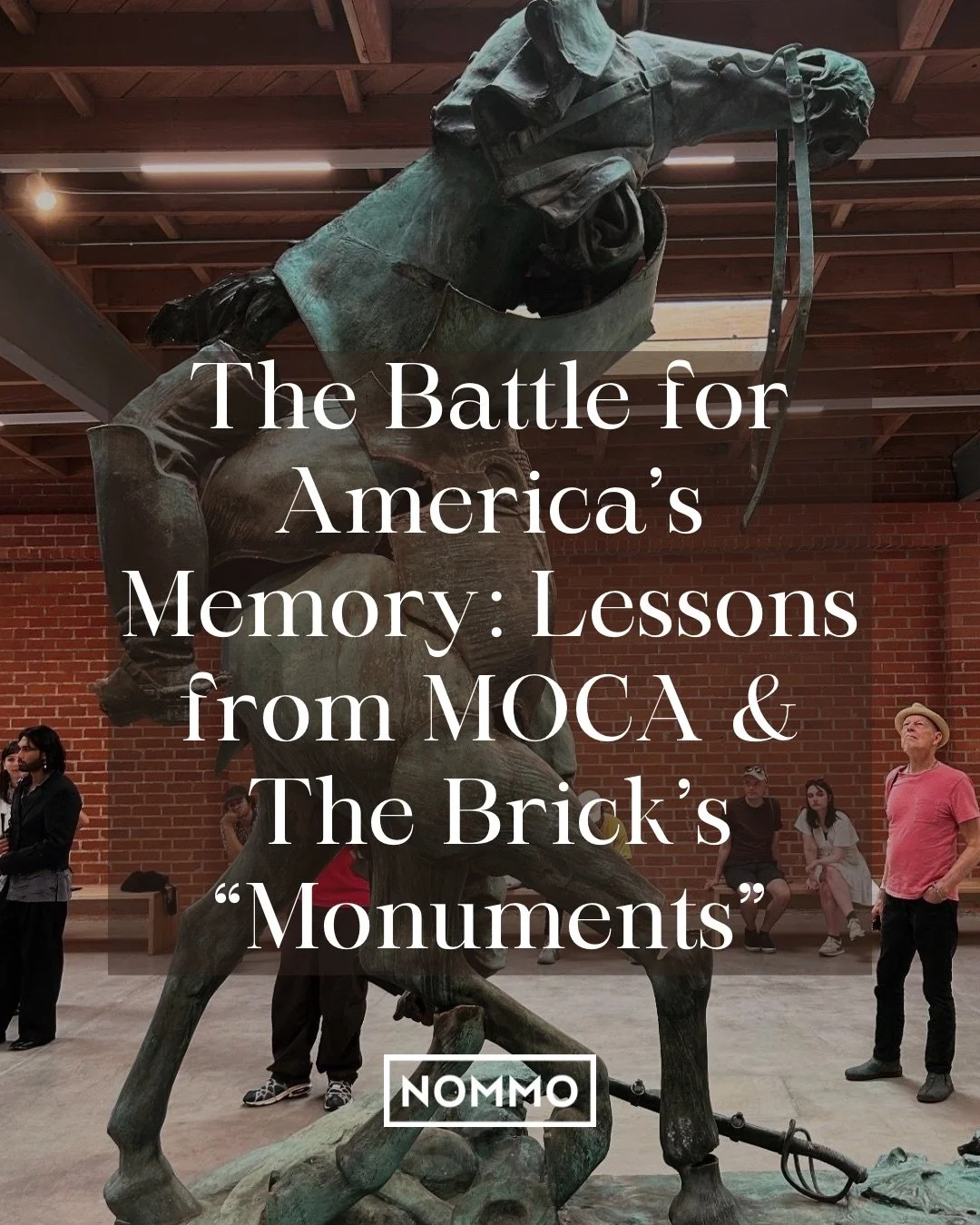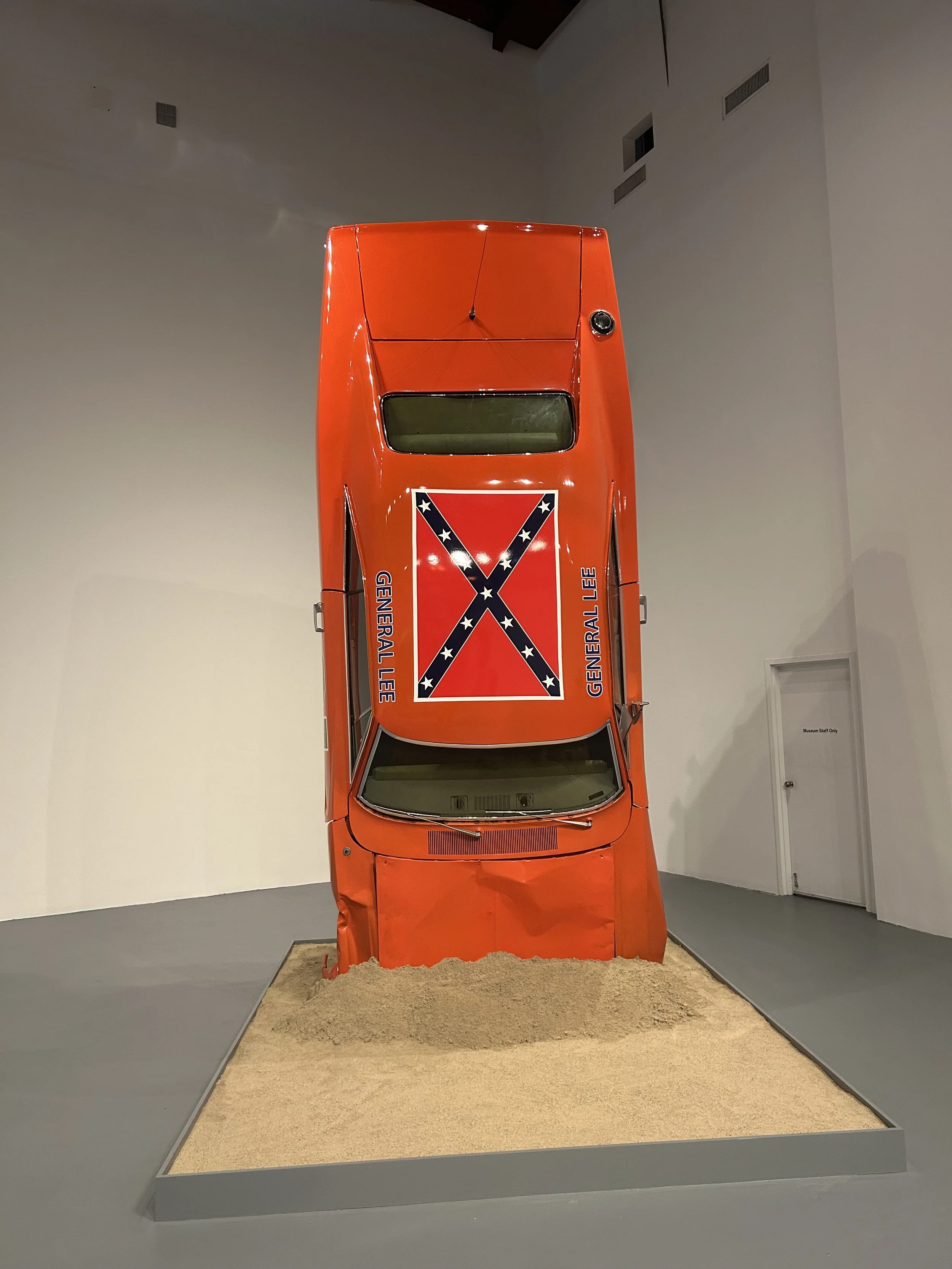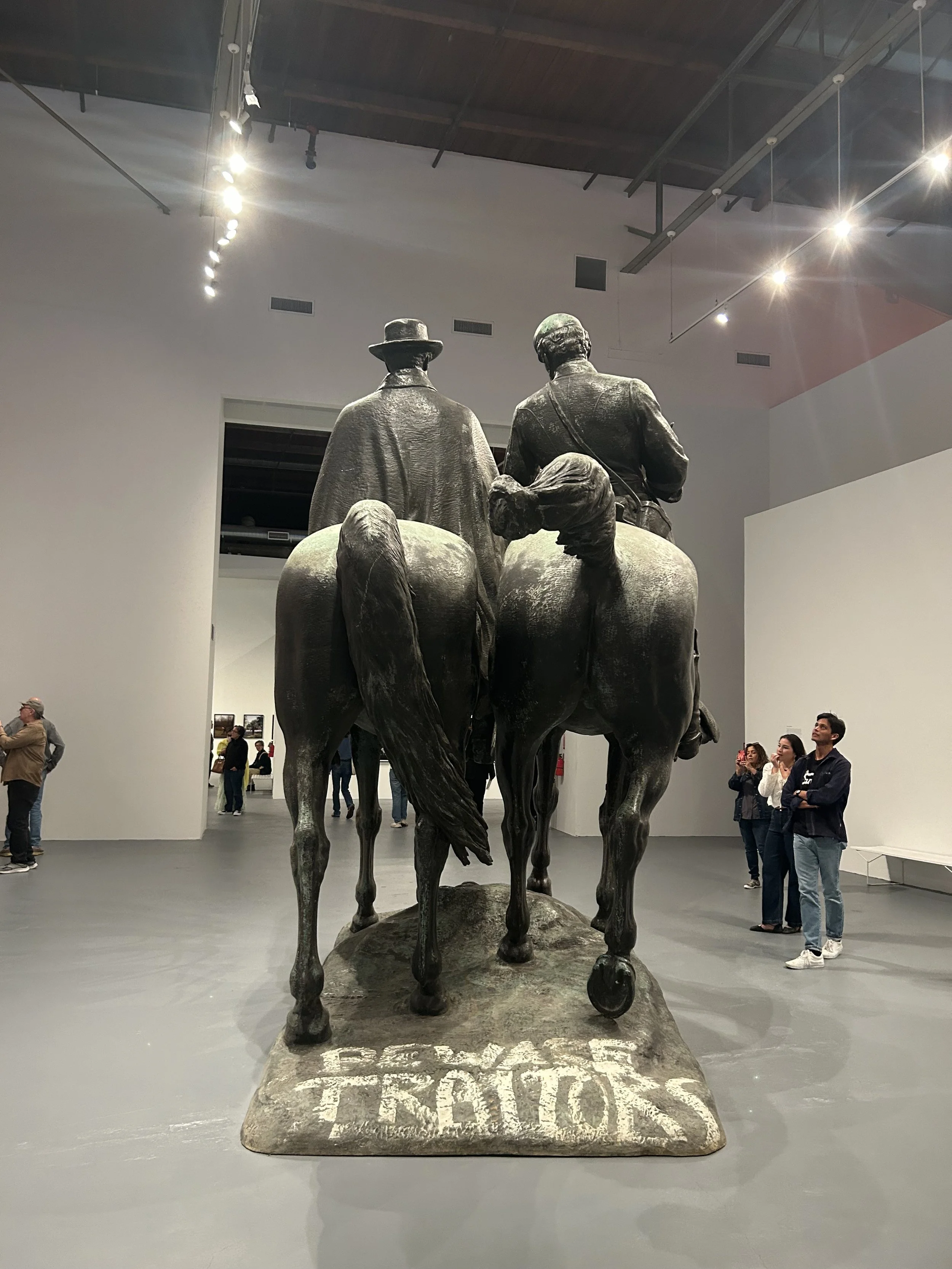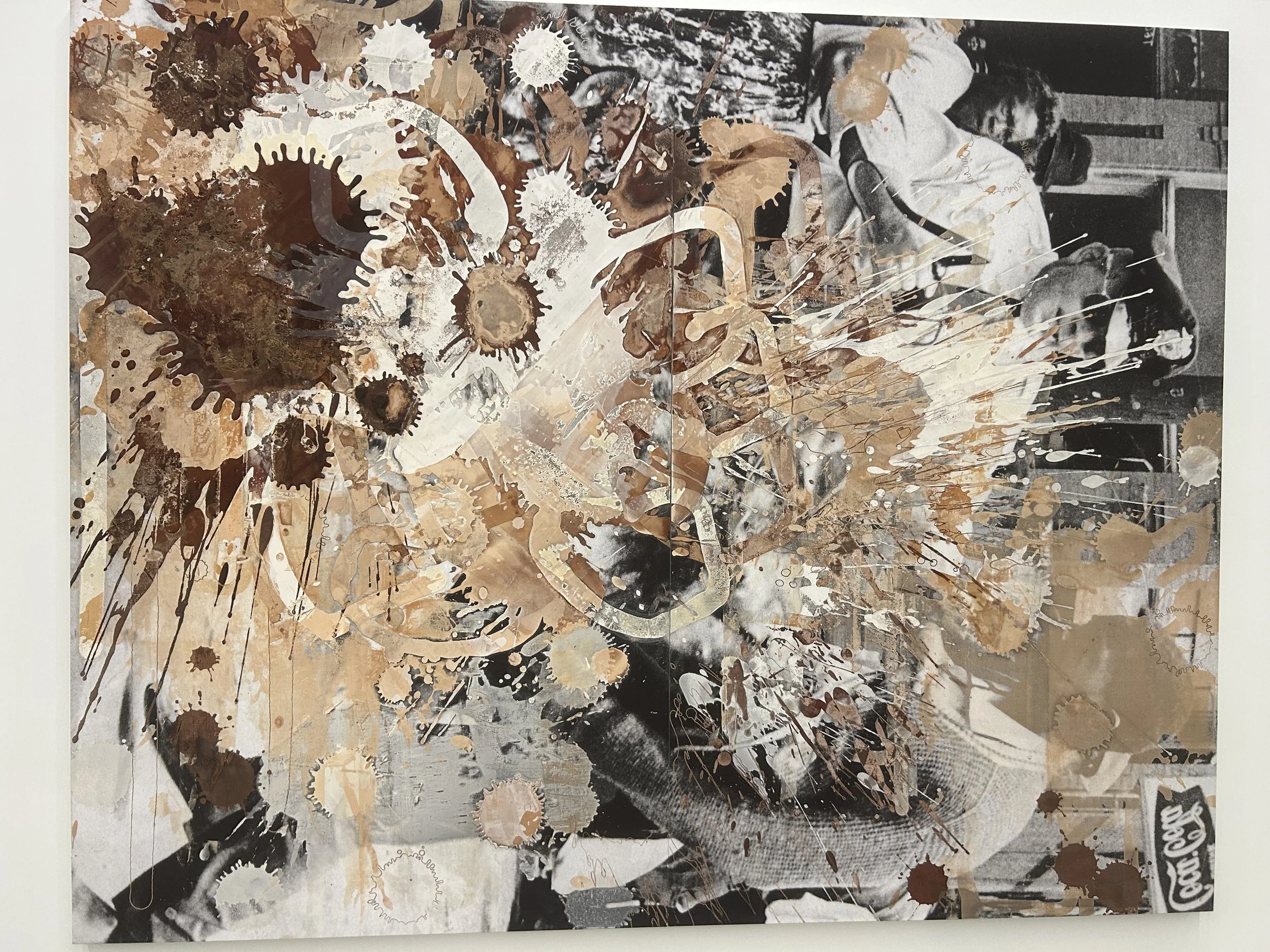The Battle for America’s Memory: Lessons from MOCA and The Brick’s “Monuments”
How NOMMO interprets the cultural civil war unfolding in America’s art spaces — and what these monuments reveal about who we remember and why.
“Unmanned Drone,” Kara Walker, The Brick, 2025
This Autumn, NOMMO attended Monuments, the Museum of Contemporary Art’s and The Bricks’ sweeping exhibition across Los Angeles, CA, that examined the Confederate mindset and its long shadow over the American imagination. Spanning the Geffen Contemporary and The Brick, the exhibition traced how the legacy of enslavement, Confederate mythology, and the “Lost Cause” narrative continue to shape the nation’s understanding of itself.
For NOMMO, Monuments was not only a study of history but a mirror for the present. The presentation revealed how symbols of the Confederacy, whether in bronze, marble, granite, cast zinc, film, or media, have long reinforced myths that normalize white supremacy under the banners of heritage and patriotism, many recently toppled by the civic protests from 2020.
At the Geffen, the scale and candor of the exhibition’s presentation were both staggering and sobering. Installations featuring retellings from D.W. Griffith’s The Birth of a Nation and portraits glorifying the Ku Klux Klan forced audiences to face the violence embedded in American cultural memory. For Black viewers, the experience could be deeply triggering. Yet, within that discomfort lies power: the power to name and dismantle the myths that have defined American life for centuries.

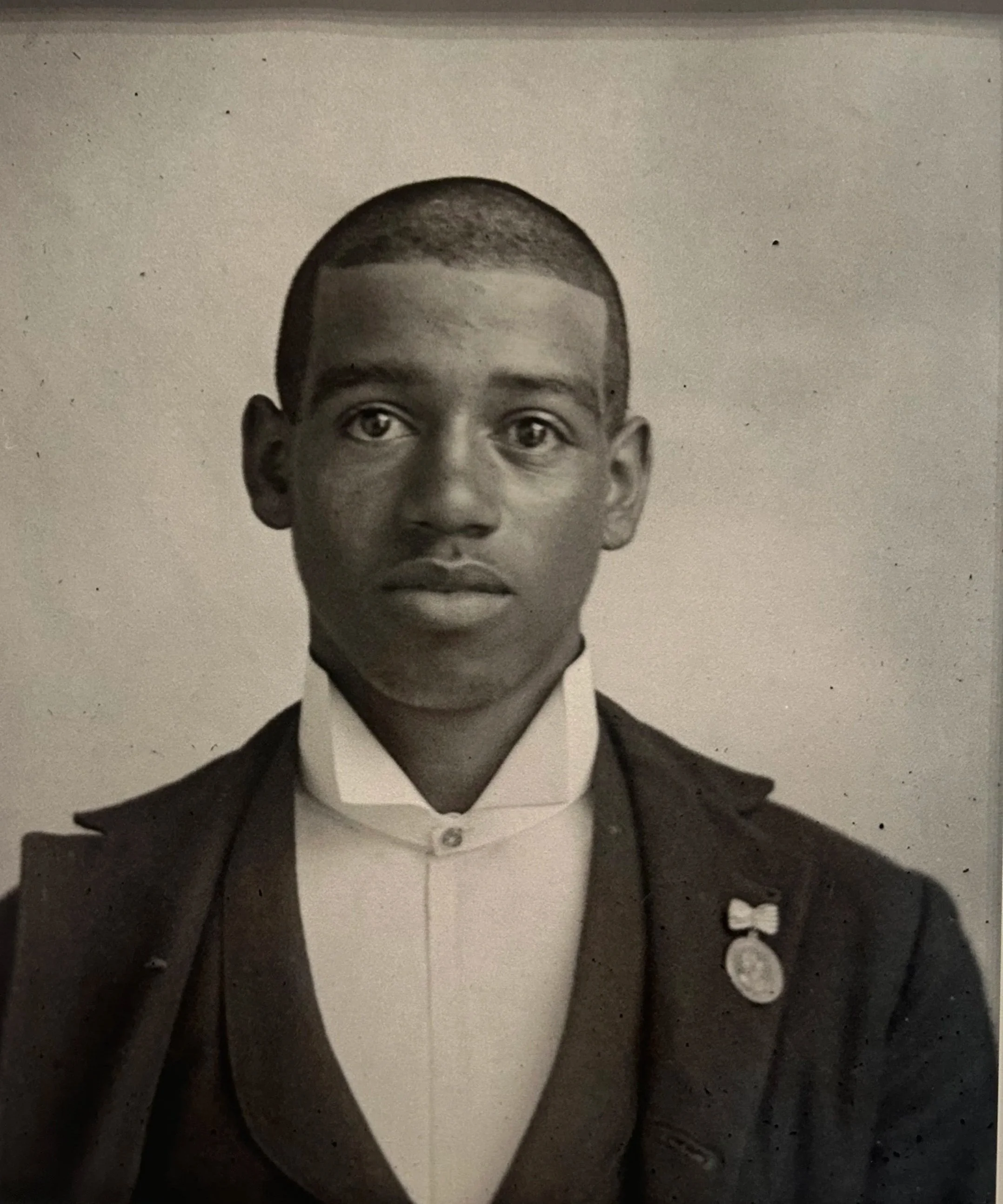




For Black audiences, Monuments invites both pain and affirmation. It acknowledges the distortion of our histories while highlighting how Black contemporary artists, such as Karon Davis, Hank Willis Thomas, and Kara Walker, among others, reclaim public space through reinterpretation and imagination. Kara Walker’s reinterpretation of a Confederate monument in "Unmanned Drone" at The Brick effectively transforms trauma into testimony. This work asserts that America's monumental landscape has long reflected its racial hierarchies. It highlights the importance of rewriting these disrupted truths and myths in a significant way to engage in a cultural contest against the narratives rooted in apartheid.




White audiences, too, appeared visibly unsettled and intrigued by the exhibition at both locations. Many encountered, perhaps for the first time, how little the Civil War and Reconstruction are taught in American schools. Studies show that fewer than 8 percent of U.S. high school seniors identify slavery as the central cause of the Civil War, and fewer than half study Reconstruction at all. This educational gap sustains a selective national memory, where Confederate heroes are still honored more often than those who fought for freedom and democracy in the Union, especially the formerly enslaved Africans. Reports from 2022 to 2025 indicate that over 2,000 public symbols of the Confederacy remain standing across the U.S., including monuments, markers, schools, parks, and street names.
Exhibitions like Monuments help fill that void. They position museums as sites of civic accountability rather than aesthetic distance. The inclusion of works such as Hank Willis Thomas’s "A Suspension of Hostilities," a homage to the Duke of Hazzard’s car, which critiques pop culture’s casual embrace of Confederate symbols, underscores how these myths seep into everyday American life, specifically, America’s living rooms.
A Suspension of Hostilities, 2019 by Hank Willis Thomas
As our founder, chief curator, and historian, Tyree Boyd-Pates, reflected while viewing the exhibition, we are living through what can only be described as a cultural civil war. Inspired by Ta-Nehisi Coates’s We Were Eight Years in Power and The Message, Tyree noted that this cultural conflict is fought not through cannons or muskets, but through media, monuments, censored books, and the meaning itself. Each cultural battlefield, whether in galleries, classrooms, or public debates, mirrors past skirmishes and foreshadows future ones. The stakes are no longer just historical; they are existential, and that battleground is unfolding as we speak.
For NOMMO, Monuments affirms why cultural strategy matters. It demonstrates that the contest over national identity is not abstract; it is visual, emotional, and ongoing. The myths of the Confederacy have not disappeared; they have evolved into new forms. To confront them requires more than artistic interpretation. It demands collective reeducation and a willingness to build new monuments that honor truth, resilience, and the unfinished project of American freedom.
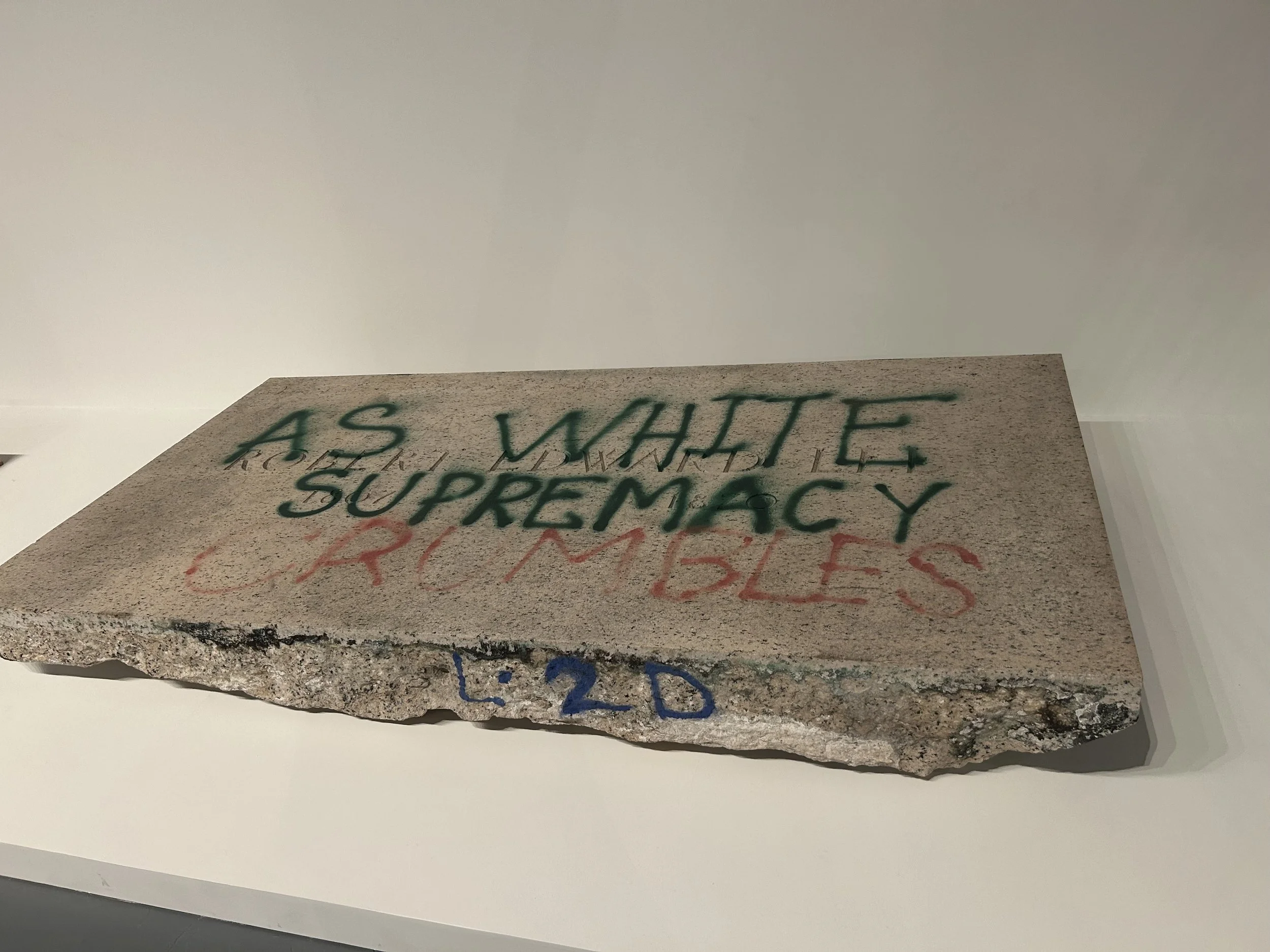
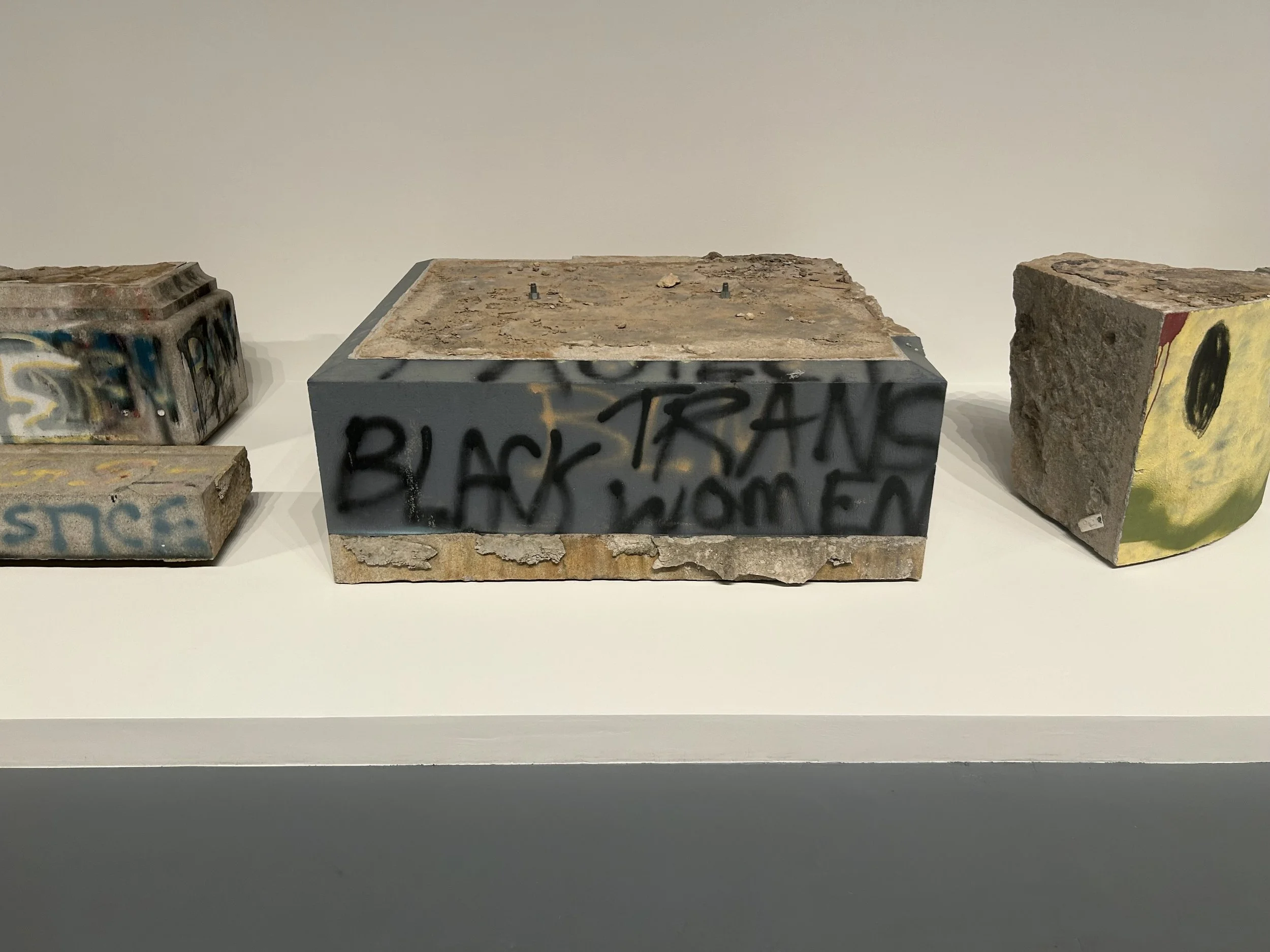

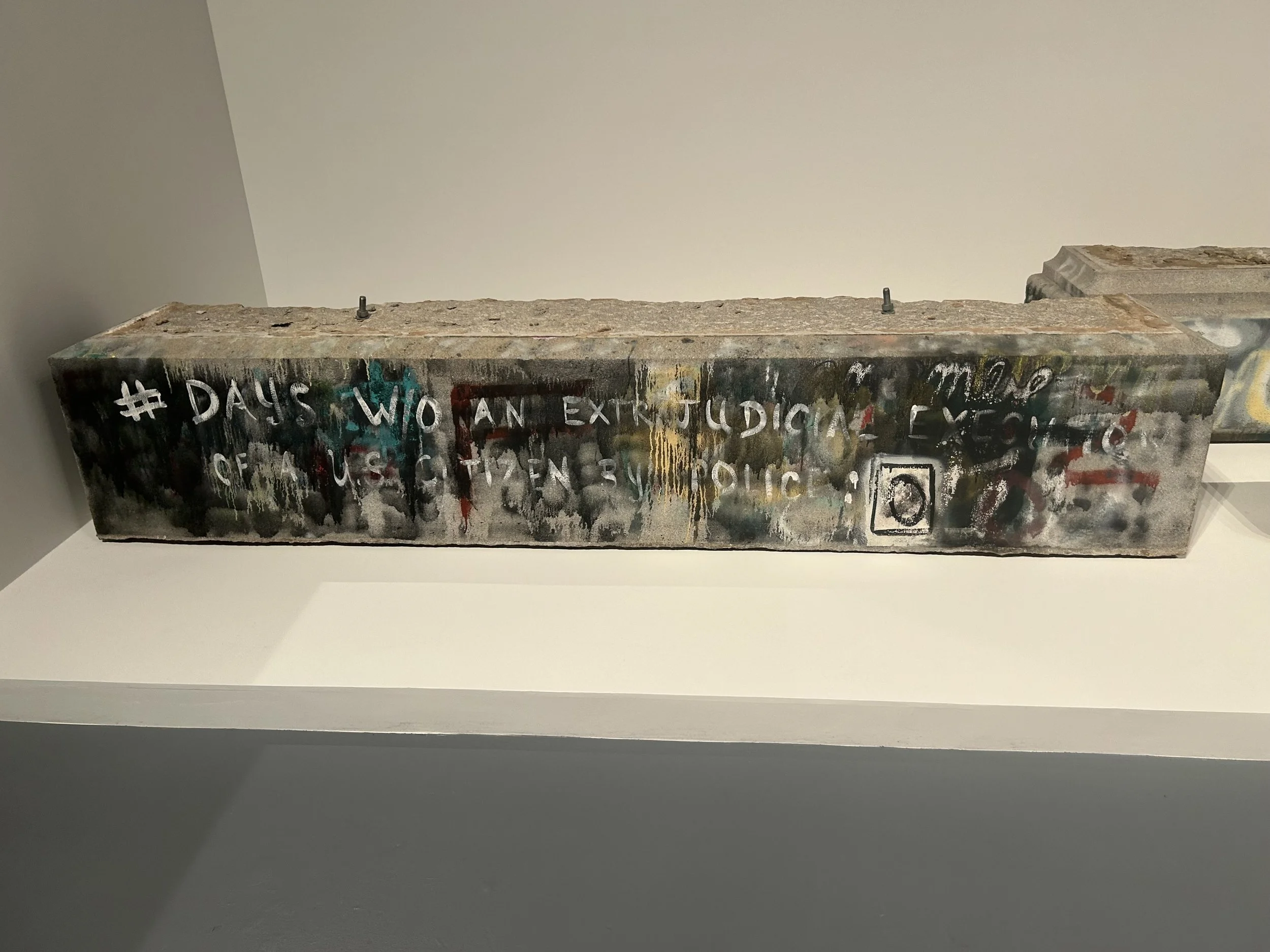
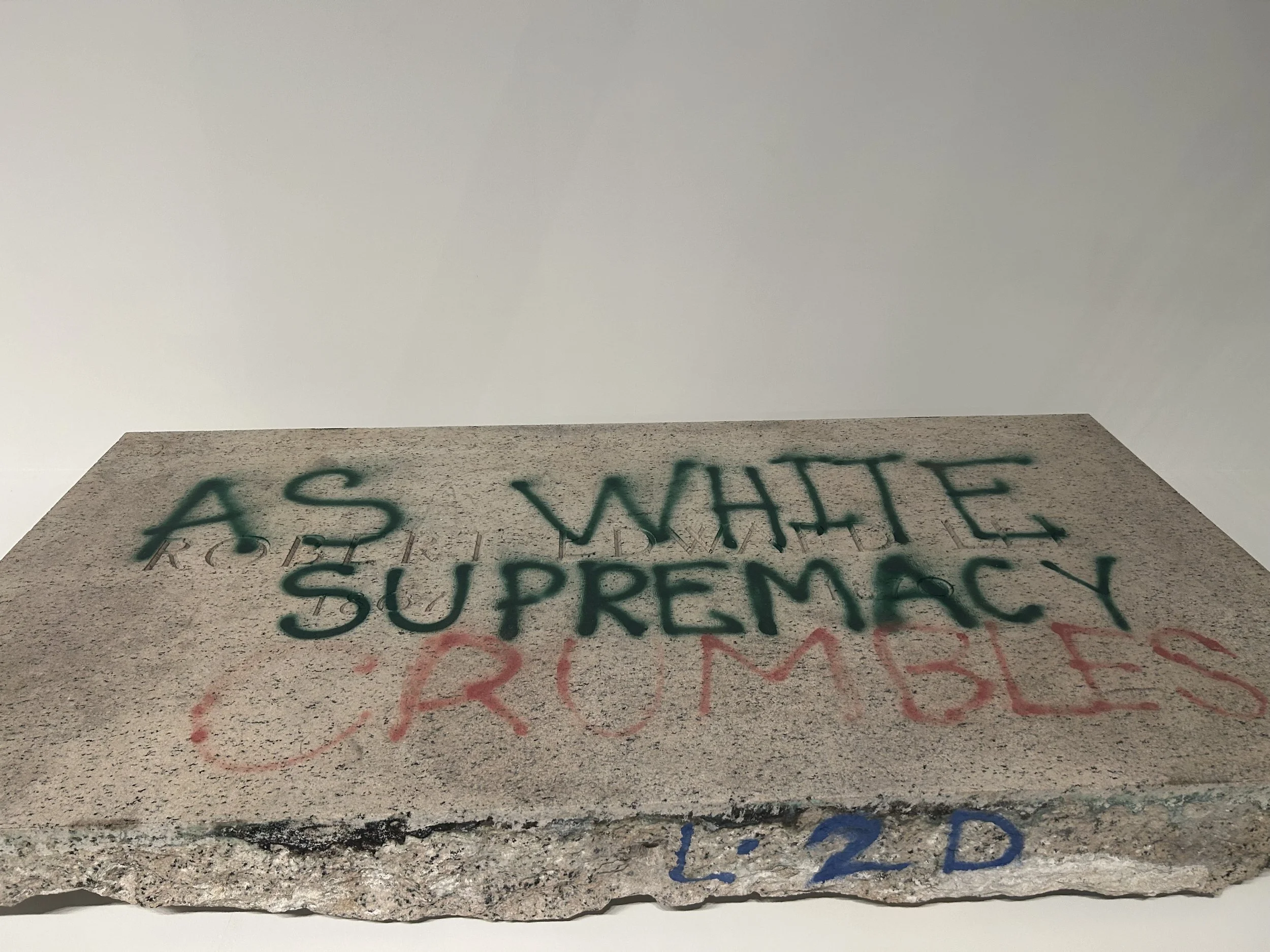

As Los Angeles continues its own reckoning with race and remembrance in preparation for the 34th anniversary of the LA Uprising in 2026, Monuments offers a blueprint for how museums and cultural institutions can become active agents in shaping public memory. It challenges us to ask three key questions: What monuments still exist within our periphery, and which deserve to be toppled or reimagined? How can we ensure that the next generation inherits symbols of liberation rather than domination?
In this moment of cultural fracture and the reinstallation of toppled Confederate monuments by our federal administration, MOCA and The Brick’s Monuments remind us that the stories we preserve determine the futures we imagine. The war for America’s memory is not behind us; it is happening right now, in the galleries, classrooms, and creative spaces where truth and myth still collide.
Stonewall Jackson and Robert E. Lee Monument
Stonewall Jackson and Robert E. Lee Monument
Exploring Black Life and African American Art at the Marciano Art Foundation in Los Angeles
During a recent visit, NOMMO explored the Marciano Art Foundation on Wilshire Boulevard in Los Angeles, CA. Once a grand Masonic Temple, this historic landmark now thrives as a vibrant museum, inviting the public to engage with its extensive collection and immersive exhibitions.
In alignment with NOMMO’s mission to illuminate African American art, history, and culture, the Marciano highlights works by celebrated artists such as David Hammons, Mark Bradford, Glenn Ligon, and Deana Lawson, whose portrayals of Black life demand recognition and reverence. The collection also includes works by artists like Kelley Walker, whose Black Star Press reflects on Black life and the civil rights movement, showing how media and representation continue to shape historical understanding.
Glenn Ligon — Stranger #78
At the Marciano, Glenn Ligon’s #78, made with coal dust, offers a powerful exploration of political differences and ideas of belonging, highlighting his use of this material as both a favorite and a metaphor. This series, inspired by James Baldwin’s 1953 essay “Stranger in the Village,” which he began in 1997, features stencil passages on canvas covered with coal dust and glue until the words nearly disappear. The dark surface makes the text almost unreadable, physically embodying Baldwin’s central question: Who, in the end, is the stranger? This work hits the viewer where they stand.
David Hammons — Untitled Works
David Hammons: Untitled, 2010. Acrylic on canvas and tarp, 103 x 80 inches.
On view at the Marciano, viewers can see that the enigmatic David Hammons commands a powerful presence within the galleries. Whether it's the monumental Untitled (2010), a canvas-and-tarp piece dominating a second-floor wall, or the striking Untitled (2007) fur coat embedded with acrylic and spray paint, Hammons’s works resist simple classification. They function on both personal and collective levels, encouraging viewers to reflect on the connections between the artist’s inner world and the real-life experiences of Black Americans.
David Hammons: Untitled, 2007. Fur coat with acrylic and spray paint.
Deana Lawson — Afriye
Deanna Lawson, Afriye: ,2023. pigment print.
Difficult to neatly classify, Deana Lawson’s work at the Marciano’s second-floor galleries straddles photographic tradition and social collaboration. Afriye (2023) places as much emphasis on Lawson’s intimate exchange with her subjects as on the resulting image. Its mirrored frame amplifies the gaze of the two figures while reflecting our image, making us participants in the act of looking.
This interplay recalls Diego Velázquez’s iconic Las Meninas (1656), which also stages a complex relationship between artist, subject, and audience through a mirror. By extending this self-reflexive gesture into a contemporary and deeply personal context, Lawson transforms Afriye into a temporal bridge—connecting private Black spaces to a broader lineage of image-making and creating a powerful arena for self-definition.
Mark Bradford — Building “The Big White Whale”
On display at the Marciano, Building “The Big White Whale” (2012), Mark Bradford employs his signature collage technique, layering found paper, string, paint, and urban ephemera to create a monumental surface that feels both architectural and oceanic.
The title alludes to Herman Melville’s Moby-Dick, turning the “whale” into a metaphor for vast, often unseen systems, social, economic, and racial, that influence and shape our lives. From a distance, the piece appears as pure abstraction; up close, it reveals fragments of advertisements, merchant posters, and weathered street materials, illustrating the layered histories embedded in the urban landscape. Bradford’s work combines literary allusions, personal memories, and collective history into a single, compelling statement.
Artists Engaging Black Histories
Kelley Walker — Black Star Press
Kelly Walker, Black Star Press (2006). Digital print
While not a Black artist, Kelley Walker’s Black Star Press (2006) revisits Charles Moore’s 1962 photo essay documenting civil rights protests in Alabama. Walker digitally reprints these photographs and overlays them with silkscreened chocolate, creating painterly gestures that obscure and amplify the violence depicted. The work reflects on how media circulate images of Black struggle and how the meaning of those images evolves across time and context.
Field Note reflection —
The Marciano Art Foundation’s presentation of these works offers a rare, concentrated space in Los Angeles to engage deeply with contemporary Black art. These pieces do more than exist on walls; they challenge viewers, bridge histories, and expand the language of what Black art can be.
As NOMMO continues its mission to champion African American art history and culture, we see immense potential in partnering with the Marciano to amplify these narratives further, through expanded programming, interpretive resources, and community engagement that honors both the artists and the audiences they speak to.



